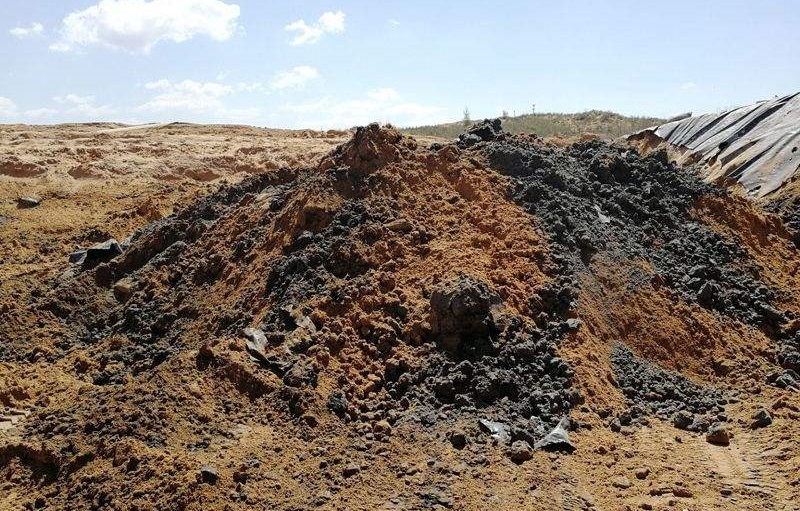Floor oil sludge is an oily solid waste produced during the production or storage of oilfield grounds. The composition is complex, the hydrocarbon components in the oil are volatilized, the asphaltenes and colloidal heavy components increase, and it is difficult to handle. Using thermal analysis as a floor sludge treatment process has important practical significance for the floor sludge produced in oilfield development. The ground oil sludge has a very low oil content after the treatment, which can be directly incinerated or buried, and the crude oil after cleaning can be recycled directly, and the wastewater after cleaning can be recycled.
The ground sludge mainly comes from the oil-water mixture dropped on the well site during oil well workover operations, and the oily sludge at the bottom of the oil storage tank is regularly cleaned. The oil sludge at the well site usually contains impurities such as oil sludge. The oil sludge composition of the oil storage tank is mainly There are mud water and a small amount of crude oil. These sludges can be turned into waste through treatment, but if not treated in time, they will cause secondary pollution to the surrounding environment for a long time. Because its main component is organic matter, it will seriously pollute the soil and it is difficult to degrade. In rainy days, surface runoff will flow into surface water, causing river pollution. Therefore, the timely treatment of ground sludge can not only solve the pollution problem, but also turn waste into treasure, bringing certain economic benefits to the oilfield.
Due to the different types of sludge, the measures taken to treat sludge in different oil fields are also different.

1. Curing treatment
The curing treatment is to mix the floor sludge with a certain amount of chemical additives to cause physical or chemical changes to the two, and perform solid treatment on them. In this way, the harmful substances in the sludge are solidified or blocked in an inert solidified base material to make them It must be stable and harmless, and easy to transport, use or handle. The advantage of this treatment method is that it can greatly reduce the pollution of the soil by various organic substances and harmful ions contained in the ground sludge, thereby reducing the environmental impact and harm. Moreover, the equipment is simple, the processing cost is low, and a certain cost can be saved; the disadvantage is that a large amount of material needs to be added, the curing range is limited, all crude oil is lost, and there is a hidden danger of pollution.
2. Dehydration incineration
Most oil refineries in China have built sludge incineration devices. The sludge is dehydrated before incineration. First, the oily sludge is placed in the sludge concentration tank, and the temperature in the tank is increased. An appropriate amount of flocculant is added. After stirring, gravity After sedimentation, the sludge is separated into layers, and then the equipment is dewatered and dried. The resulting mud cake is sent to an incinerator for incineration. The remaining ash after incineration must be further treated. The advantage of the incineration method is that after the treated sludge is incinerated, almost all kinds of harmful substances are removed, which reduces the harm to the environment. The disadvantage is that secondary pollution is easy to occur during the incineration process, and the resources are wasted because the sludge is not fully utilized.


